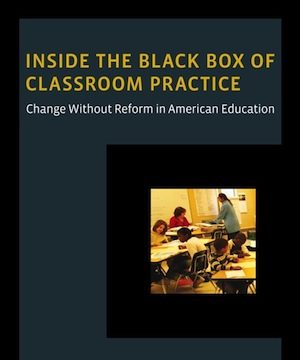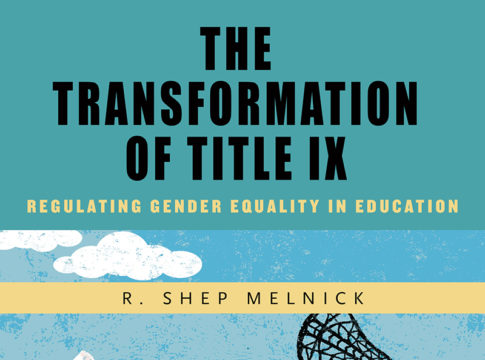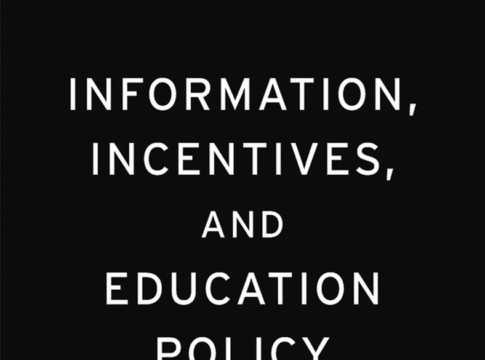Video: Nathan Glazer talks with Education Next.
 As Good As It Gets: What School Reform Brought to Austin
As Good As It Gets: What School Reform Brought to Austin
By Larry Cuban
Harvard University Press, 2010, $25.95; 288 pages.
Larry Cuban is a prolific and insightful chronicler and analyst of our efforts at urban school reform and improvement over the last few decades. In As Good As It Gets he adds the case of a successful school superintendency, that of Pat Forgione in Austin, Texas, from 1999 to 2009. When Forgione arrived the district was in turmoil, marked by micromanagement by the school board. The Texas Education Agency (TEA) had just rated the Austin Independent School District (AISD) “unacceptable” because the dropout data it had submitted were deemed “unreliable.” TEA was investigating charges of cheating on state tests, and national bond-rating agencies had placed AISD on a “negative watch” because of these troubles. When Forgione left, Cuban writes, “his performance matched that of big-city superintendents who have received national awards for their district’s improvements, such as Carl Cohn in Long Beach, Calif., Beverly Hall in Atlanta, and Tom Payzant in Boston.”
Forgione had to contend with the ever more intrusive state and national requirements (under No Child Left Behind) for testing and progress, the loss of confidence in school management, new budgetary problems under Texas’s efforts to equalize funding between prosperous districts (such as Austin) and impoverished ones, and the permanent problem of low-achieving minority schools at a time when efforts at integration had been abandoned (see “Is Desegregation Dead?” forum). After a long-running legal suit, Austin’s schools had been decreed “unitary” in 1986, and as was typical after such a release from desegregation requirements, a modest degree of integration had unraveled. Early in his tenure Forgione had to deal with the protests and threats of the Eastside Social Action Committee, which represented minority Austin. Forty-six years after Brown, it pointed out, “our schools are still separate and unequal.” The school committee rejected proposals to bring in the Edison Schools to manage some underperforming schools and the establishment of a Knowledge Is Power Program (KIPP) school. Forgione then poured resources into the schools with large minority enrollments. He replaced five of six principals in the lowest-performing schools, added math and reading coaches, introduced the Open Court reading curriculum, and mandated summer staff training.
Forgione’s superintendency was marked by a flurry, indeed a storm, of innovations. “AISD officials had to struggle with the competing agendas of numerous outside partners such as Austin’s business leaders, the ‘First Things First’ program of the Institute for Research and Reform in Education, the University of Pittsburgh Institute for Learning’s work in ‘Disciplined Literacy,’ the Dana Center for Mathematics at the University of Texas, the Gates and Dell Foundations, and other organizations… As one upset veteran high school teacher put it: ‘We’re getting this academy, and then…we’re going to do this and that…. When did that happen? It’s like ‘we’re the last to know.’”
By the standard measures of success, Forgione was a successful big-city school superintendent. The rating of “unacceptable” that the AISD had received was removed, and there were “higher district scores year after year in elementary schools, marginally higher graduation rates, lower dropout statistics, and increased college attendance for most secondary schools.” But Cuban does not leave it at that. He has seen these flurries and storms of innovations before. What interests him are the links down to the classroom level: Isn’t it there that we want to see change and improved practices leading to improved results? “The…policy logic of the decade-long reforms contains a fundamental assumption that creating new structures…will reshape teaching practices, and that those different classroom lessons will produce better student outcomes…”
This is the nub of Cuban’s examination of the Forgione superintendency and its achievements. When change as measured by test performance occurs, we don’t know what has led to it. Perhaps Cuban presses his skepticism about policies implemented from above and their effects too far. And yet he does have an important point, and one that is echoed by another major student of school reform, Richard Elmore, in a recent essay in the Harvard Education Letter. We battle over controversial matters such as school choice, school competition, charters and vouchers, and compensation linked to performance, but we rarely are able to connect these policies with teacher behavior and how it changes. “In [Austin], except for occasional stories told by administrators and teachers, few top officials know what kind of teaching occurs in the district’s nearly 6,000 classrooms. No systematically collected classroom data exist…”
Cuban is skeptical as to whether we know enough about the classroom effects of any major reform from above to embrace them wholeheartedly. So he raises cautions about a number of currently popular ideas, such as the need for the large high school to be broken into smaller learning communities, advocated by many reformers, including Forgione in Austin. Cuban’s position strikes a positive chord with me; I attended what then proudly called itself the largest high school in the world, in the Bronx, New York, without apparent ill effects to me and thousands of others.
Despite Cuban’s insistence that we don’t really know enough about what works, and why, he is willing to make some recommendations, most prominently, as we might expect, “systematically monitor whether new structures, programs, and materials aimed at improving academic achievement alter or perpetuate traditional classroom practice.” There are others, some surprising: “Raise the ceiling for schools in the uppermost tier of achievement.” “Lift the floor for the lowest performing schools.” “Expand school choice for middle- and high-school students.” Finally, he writes, we have to combine school improvement with the use of community resources to alleviate the effects of poverty and racial segregation. But there is no way of escaping the inevitable dilemmas of school reform: more choice means more variation, which reduces equity. Concentrating on test-score gains conflicts with efforts to build the capacity of school staffs.
Austin, he concludes, is “as good as it gets,” pronounced not triumphantly but with awareness of how difficult the effort is.
Nathan Glazer is professor emeritus of education and sociology at Harvard University.





